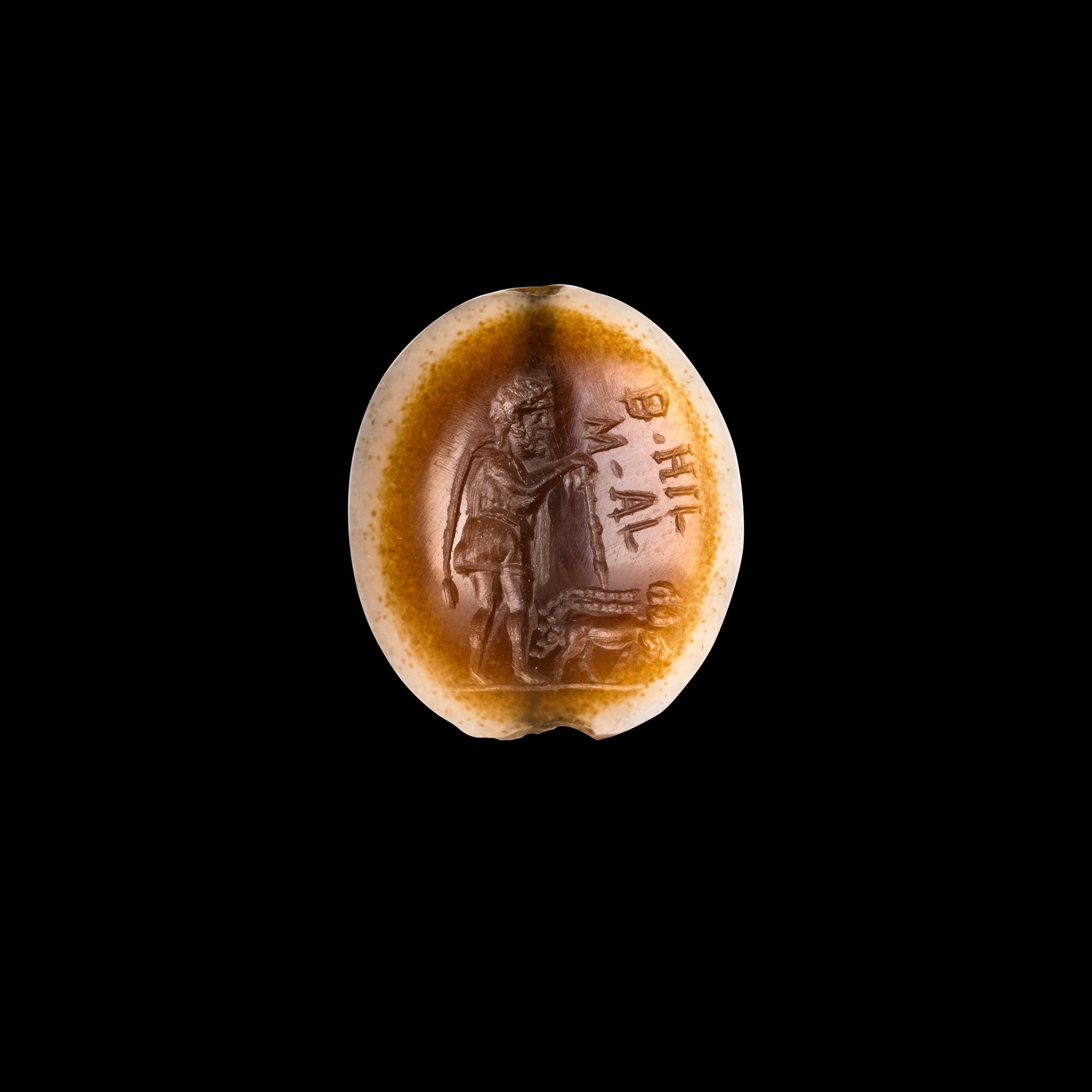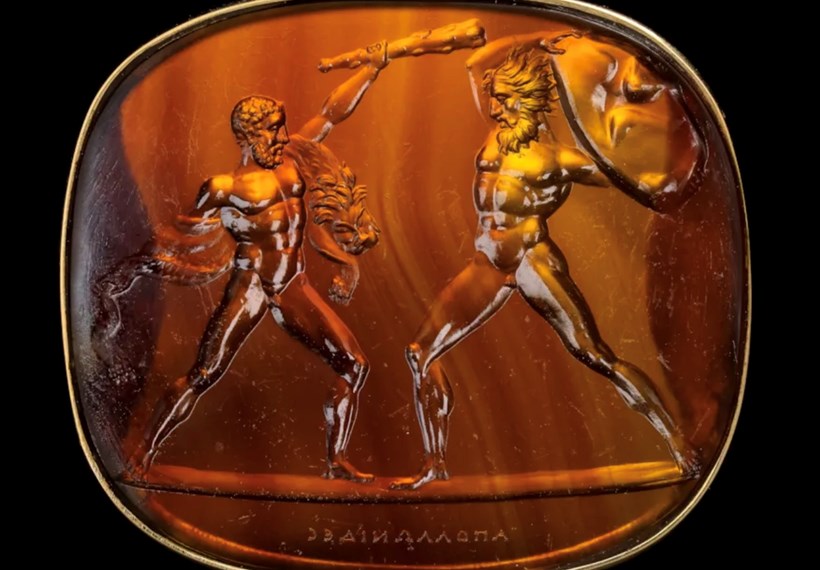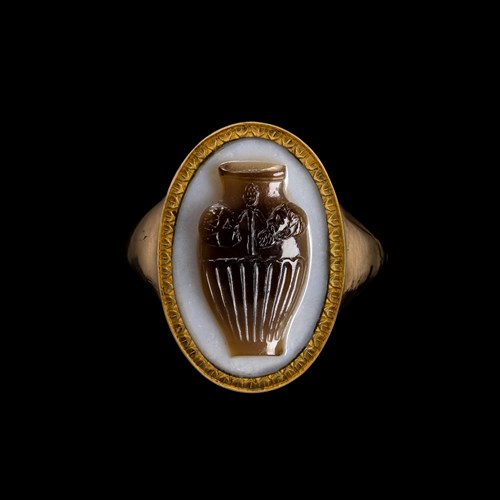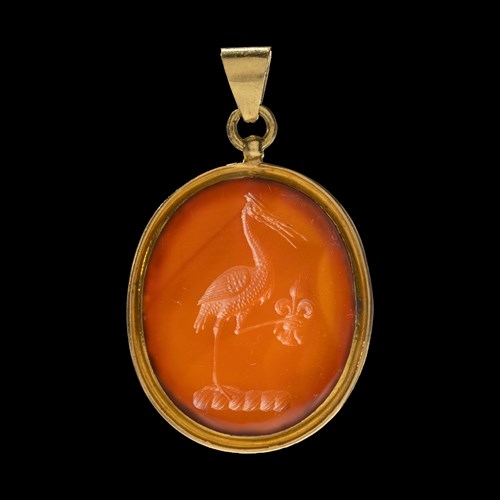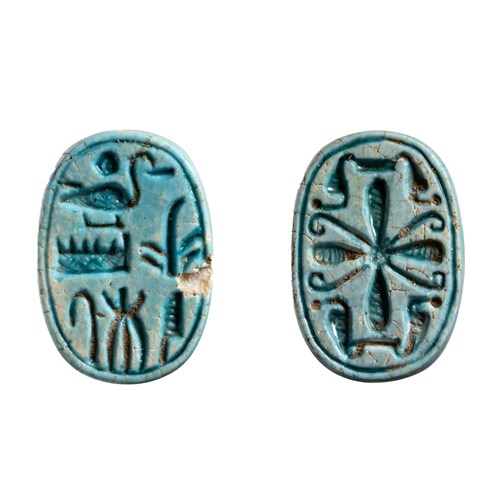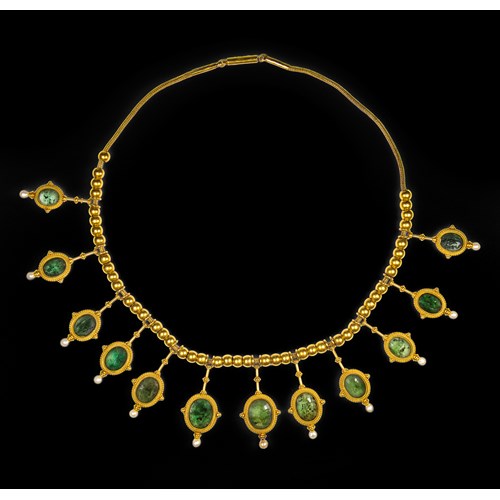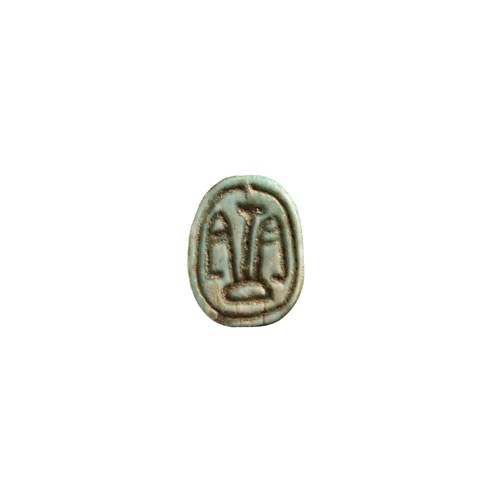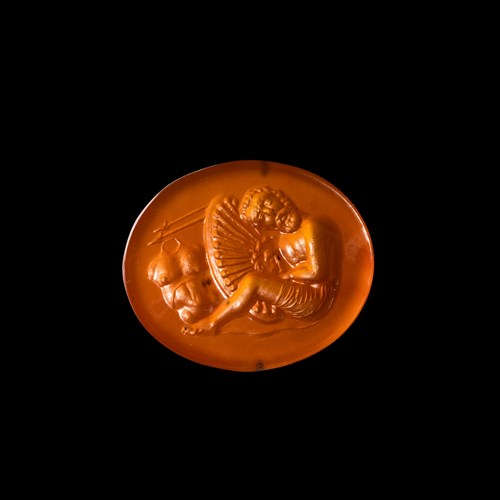Marketplace
A Roman agate intaglio. Faustulus with inscriptions.
A Roman agate intaglio. Faustulus with inscriptions.
Date 1st century A.D.
Epoque Roman
Origine London, For sale, consignment
Medium Agate
Dimension 1.25 x 1.45 x 0.6 cm (0¹/₂ x 0⁵/₈ x 0¹/₄ inches)
The lentoid agate bead is pierced lengthwise. On the darker layer the engraved scene shows a shepherd standing facing right with his herd. He holds a stick. In the field, in front of him, latin inscriptions "M.AL / B.HIL". Groundline. Wear marks on the surface of the stone.
Faustulus was the shepherd who found Romulus and Remus as they were nursed by the she-wolf, and carried the twins to his wife to be brought up.
Faustulus and his wife, Acca Larentia, raised the two twins in their cabin, later called "House of Romulus". When the two brothers are old enough to understand, Faustulus teaches them the truth about their origin.
It seems that Faustulus died accidentally, trying to separate the two brothers during the brawl caused by their disagreement over the location of the new city.
A similar intaglio in the Hermitage Museum, Saint Petersburg (Fürtwangler III, 3,2)
Faustulus was the shepherd who found Romulus and Remus as they were nursed by the she-wolf, and carried the twins to his wife to be brought up.
Faustulus and his wife, Acca Larentia, raised the two twins in their cabin, later called "House of Romulus". When the two brothers are old enough to understand, Faustulus teaches them the truth about their origin.
It seems that Faustulus died accidentally, trying to separate the two brothers during the brawl caused by their disagreement over the location of the new city.
A similar intaglio in the Hermitage Museum, Saint Petersburg (Fürtwangler III, 3,2)
Date: 1st century A.D.
Epoque: Roman
Origine: London, For sale, consignment
Medium: Agate
Dimension: 1.25 x 1.45 x 0.6 cm (0¹/₂ x 0⁵/₈ x 0¹/₄ inches)
Literature: For a similar intaglio with the same inscription see FURTWÄNGLER,A., Die Antiken Geschichte der Steinschneidekunst im Klassischen Altertum, 1985, n°48, pl. XXVIII
Plus d'œuvres d'art de la Galerie


